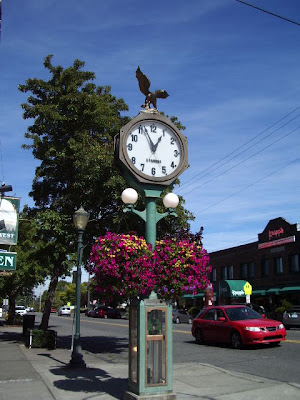 On the day of my father's birth the Panama Canal had been open for three weeks. He didn’t know or care. Neither did it matter to him that on his second day, the underdog Notre Dame football team tried out their new “forward pass” on Army, resulting in a gridiron upset never to be forgotten. I doubt if those headlines mattered to his mother either. She cared only about the new life beginning as October ended in 1913, a life during which her son would come to know and care about a great number of things. In October, when red and golden autumn leaves mark the passing of time, I think of my father more than ever. He should go down in history too.
On the day of my father's birth the Panama Canal had been open for three weeks. He didn’t know or care. Neither did it matter to him that on his second day, the underdog Notre Dame football team tried out their new “forward pass” on Army, resulting in a gridiron upset never to be forgotten. I doubt if those headlines mattered to his mother either. She cared only about the new life beginning as October ended in 1913, a life during which her son would come to know and care about a great number of things. In October, when red and golden autumn leaves mark the passing of time, I think of my father more than ever. He should go down in history too.Dad never made the headlines, except maybe on Vashon Island where he spent most of his life. Sometimes the island paper mentioned his many roles beside husband, father of seven, and friend to many. He also contributed to society as a water district commissioner, scoutmaster, PTA president, member of his church, school board, Odd Fellows lodge, and frequent volunteer in all kinds of situations. For example, during World War II he helped man an observation tower, often staying up all night to watch and listen for aircraft and record the direction of travel.
At the same time he worked long, hard hours running an auto freight business which was considered a vital industry. Truck drivers were exempted from military duty. He sometimes made two trips in a day to Tacoma where he picked up meat and other supplies, delivered flowers from Beall's greenhouse, whose blooms he also took into Seattle to the Pike Place Market. He moved people too, or pianos or firewood or somebody’s heifer to be bred or whatever else needed hauling. Over the years he worked at other jobs as well, being many things to many people, but most importantly a good example.
Have I mentioned life on the home front? Something always needed to be painted, planted, plowed, picked, or patched. My father grew enough fruit and vegetables to feed half the island. I took for granted that he could fix anything. We went on car trips, picnics and outings and no matter how long and tiring his day he’d always listen to a book report, read a story, or help on a math problem. He gave us rides in the wheelbarrow, bouncing along the garden path until we were hysterical with giggles. Through him we learned to make change, balance a checkbook, have a good work ethic. It seemed he could make everything in the world okay.
Sometimes, when I think about Dad, I think about all that has changed since his birth. In that year Ford Motor Company began using the first moving assembly line, and his mother marveled at the news of an electric home refrigerator just out on the market. He lived through several wars, the wackiness of Wall Street, space travel and Spandex and learned to use a computer. At least he's done raking leaves. If only all Americans lived by his ideals of citizenship and kinship, our country would be a better place. Thinking of you, and missing you, Dad. Happy Birthday. That old Panama Canal has nothing on you.









